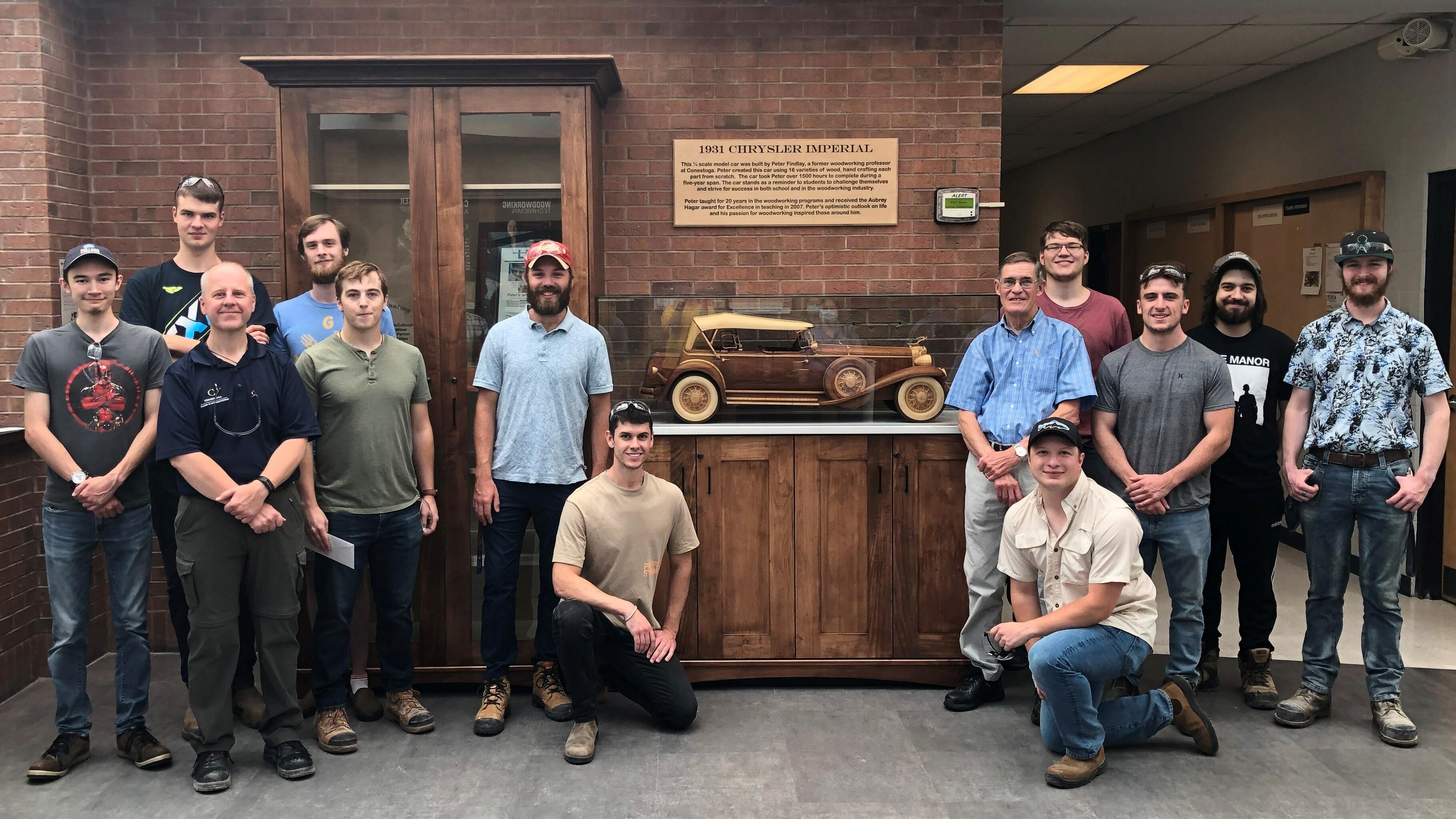Students in Conestoga’s Woodworking Technology program recently revealed a group project crafted to showcase a model car built by retired woodworking faculty member Peter Findlay.

Third-year Woodworking Technology students built a display cabinet as part of their team capstone project to showcase a model car crafted by retired woodworking faculty member Peter Findlay (standing fifth from the right).
The display cabinet was built by third-year students as part of the program’s team capstone project requirement. A culmination of skills and knowledge learned over the length of the program, the capstone project allows students to experience the typical life cycle of the design and engineering phases of a woodworking product launch. The process includes engineered drawings, material flow plans and project management tools before manufacturing, assembling and finishing the designed components.
“The capstone project plays a vital role in students’ learning, allowing them to apply theory to practice,” said Joni Jean, chair to the Schools of Engineering & Technology and Trades & Apprenticeship. “Working in a team adds a dynamic that fosters further skills development in project management and communications to develop a deeper understanding of real-world challenges, setting students up for success as they head out into the workforce.”
The cabinet includes two display units crafted from maple and finished with a waterborne stain with materials sourced from industry and partner donations. Its intended use was to create a space in the foyer of Conestoga’s Woodworking Centre of Ontario at the Kitchener - Doon campus to showcase student projects as well as a permanent home for the 1931 Chrysler Imperial scale model crafted by Findlay.
Built as a commission for car collector George Evoy in 2001, Findlay constructed the model with 14 varieties of wood, each selected to achieve the colour of the actual car. The body is fashioned out of dark walnut, chrome accents were carved from Ontario-grown curly maple, and the model’s four tires are made of wenge. Except for a few dozen well-hidden screws, the model is unpainted wood from bumper to bumper. Including design time, the car took more than 1,200 hours to build.
Findlay used the commission to fund the Peter Findlay Woodworking Materials Bursary at the college, presented to a Conestoga woodworking technician or technology student with high achievement in the first-year materials course and demonstrating financial need. The model car was donated to the college by Envoy’s family after he passed away.
Students presented the completed display cabinets in August to the Conestoga community, including Findlay. The capstone group project also included a table for the foyer crafted from maple and rosewood veneer.
The Woodworking Technology three-year advanced diploma program provides students with theoretical and practical training related to the technology and skills involved in the efficient and quality-conscious manufacture of furniture, cabinets and architectural millwork. Through co-op, students are provided the opportunity to relate in-school training with real industrial experience.
At approximately 52,000 square feet, Conestoga’s Woodworking Centre of Ontario is the largest facility of its kind in North America and ranks among the world’s top woodworking training centres. Students have access to custom woodworking and production training as well as the latest in Computer Numerical Control (CNC) and computer drafting technology.
